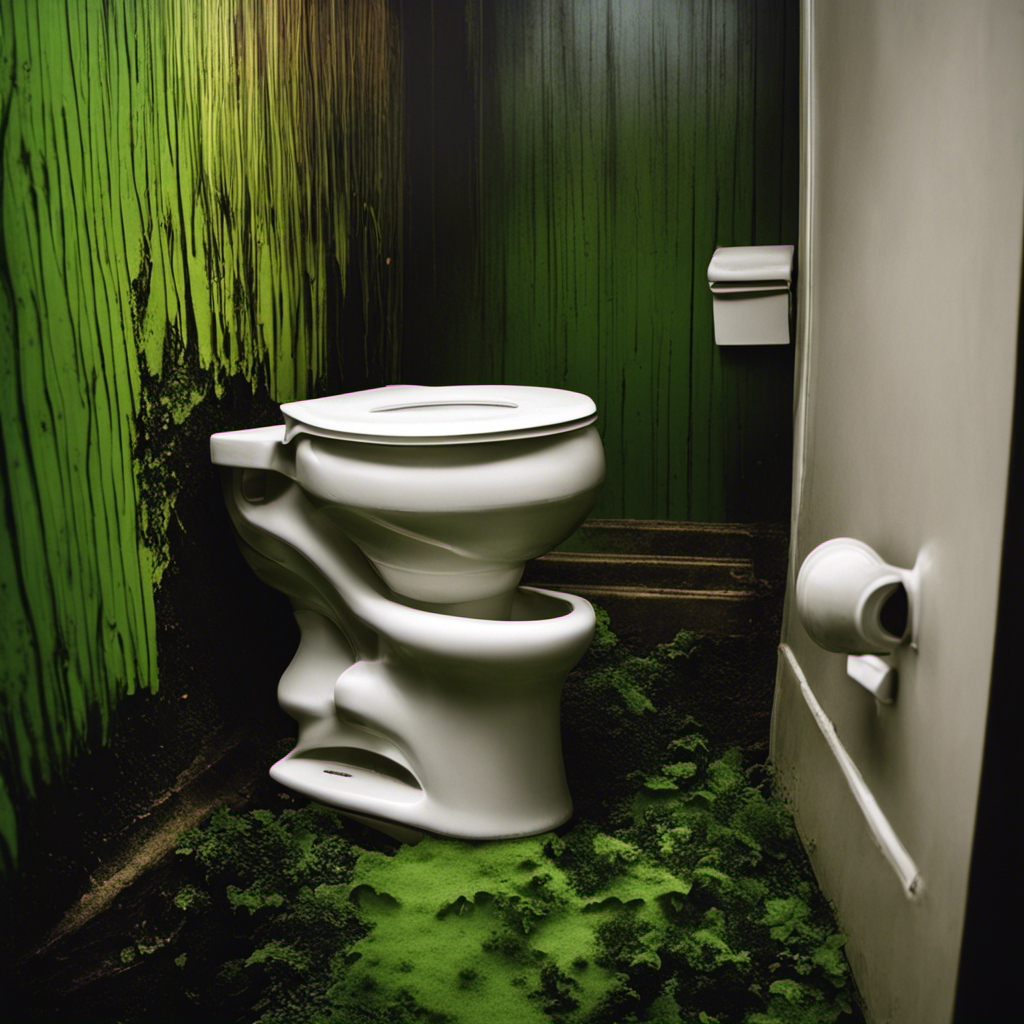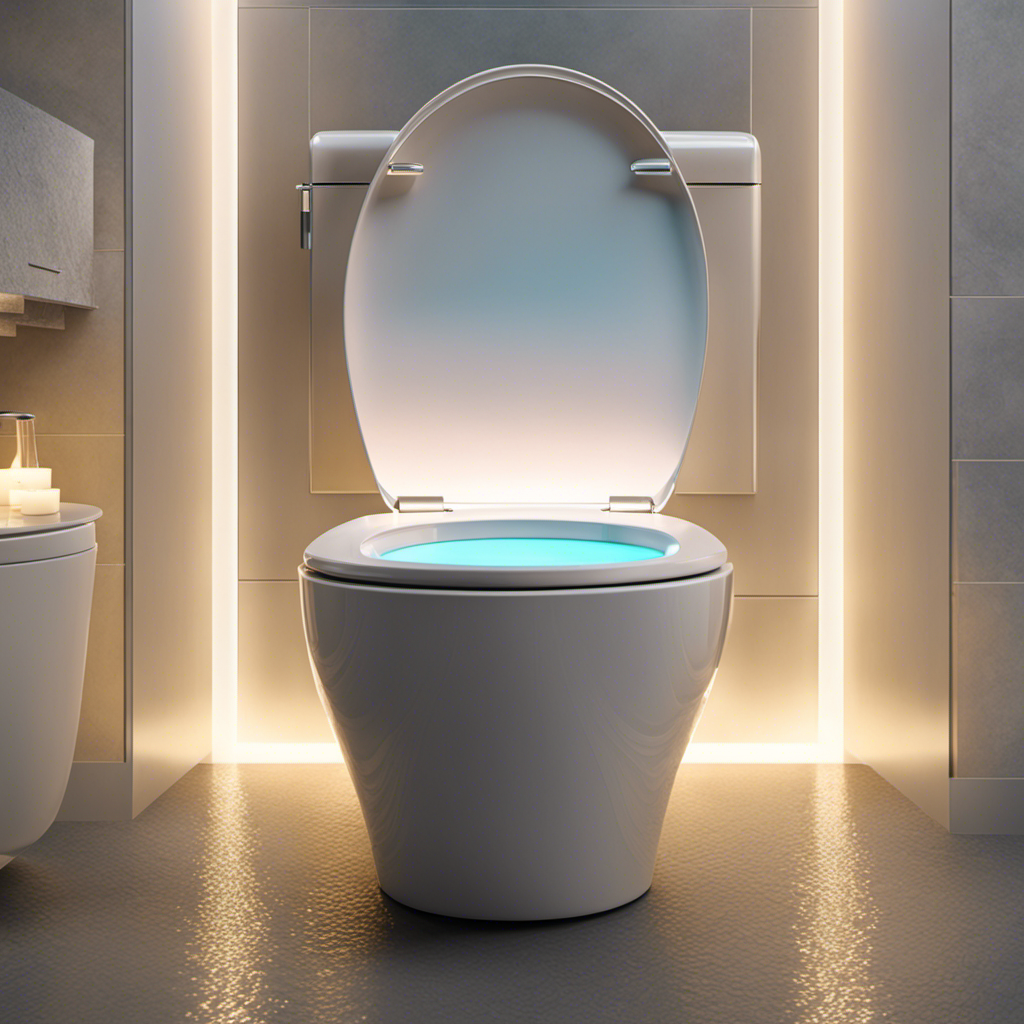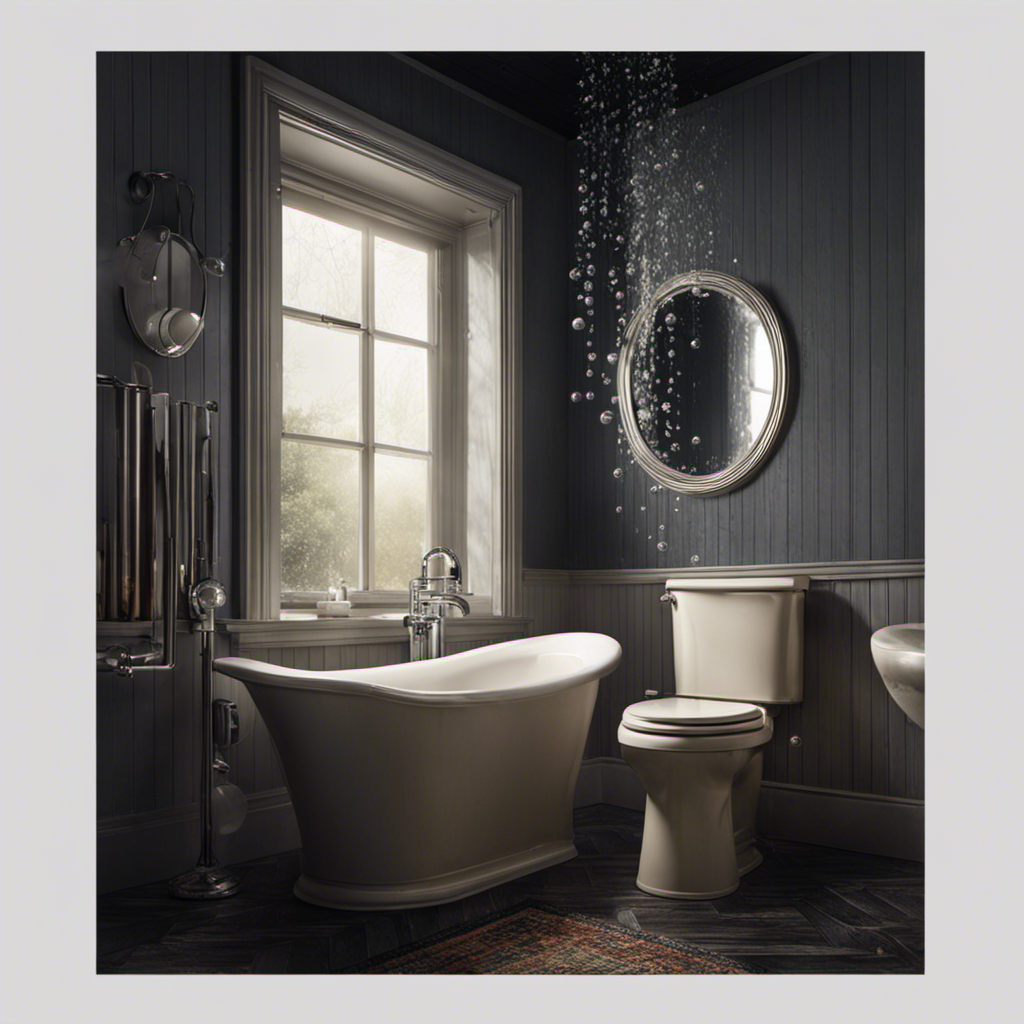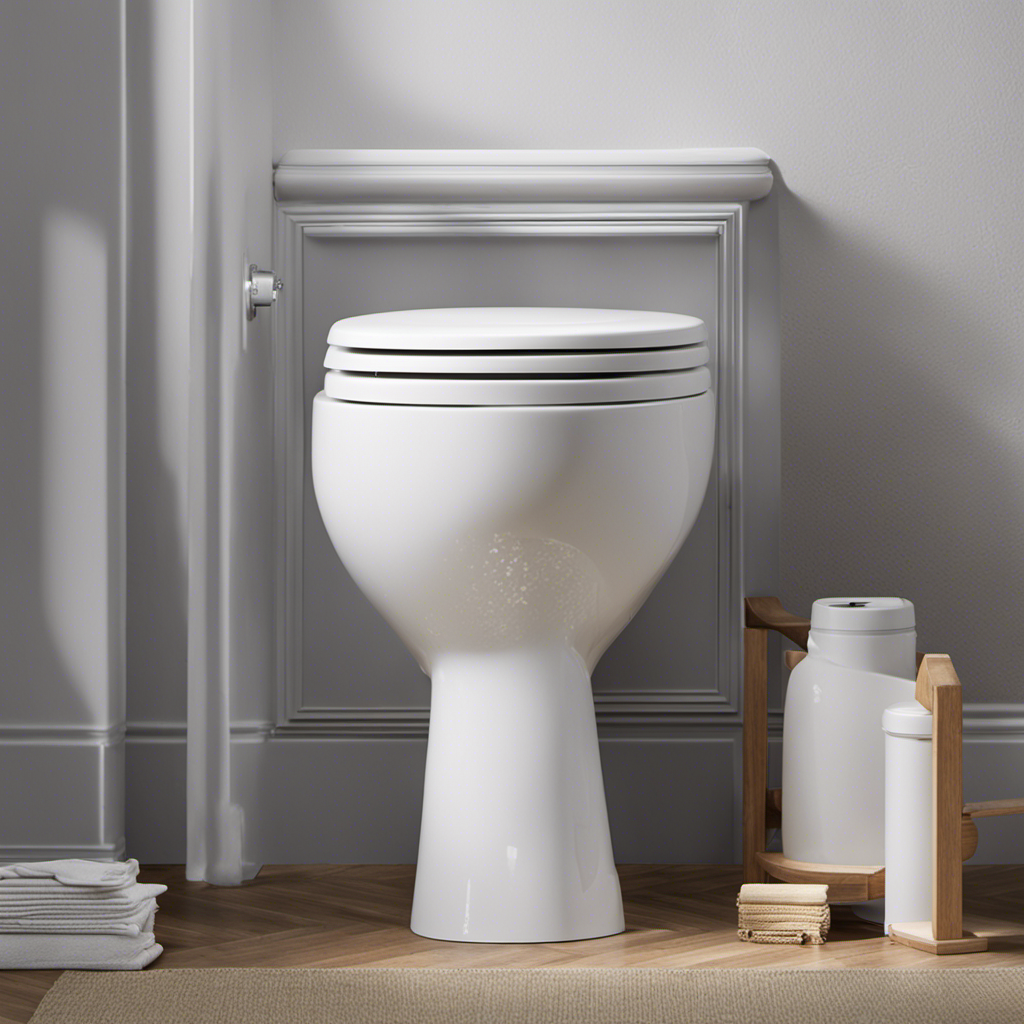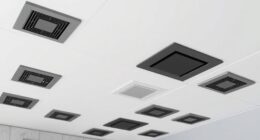Have you ever wondered why mold seems to flourish in your toilet?
Well, look no further for answers! In this informative article, we will delve into the causes of mold growth in toilets and help you understand the ideal conditions that promote its development.
We will also explore how moisture plays a significant role in fostering mold and highlight common mistakes that unknowingly encourage its presence.
Fear not, for we will provide you with effective steps to prevent mold growth and effective methods to remove it.
So, let’s dive in and uncover the mysteries of mold in your toilet!
Key Takeaways
- Lack of regular cleaning and the presence of moisture and organic matter contribute to mold growth in toilets.
- High humidity levels and limited airflow create ideal conditions for mold to thrive in toilets.
- Excessive moisture in the bathroom, such as from leaks or spills, promotes mold growth and poses aesthetic and health risks.
- Preventive measures, such as promptly addressing plumbing issues, ensuring proper ventilation, and using mild cleaning agents, can help prevent mold growth in toilets.
The Causes of Mold Growth in Toilets
If you don’t regularly clean your toilet, mold can start to grow due to the moist environment. Toilet maintenance is crucial in preventing mold growth and minimizing potential health risks.
Mold thrives in damp and dark places, making your toilet an ideal breeding ground. The combination of moisture and organic matter, such as urine and feces, provides the perfect conditions for mold to multiply. Mold spores can be harmful to your health, causing allergies, respiratory issues, and even infections.
To prevent mold growth, it is essential to clean your toilet regularly with a disinfectant cleaner. Scrub the bowl, tank, and seat to remove any mold or mildew. Additionally, ensure proper ventilation in your bathroom to reduce humidity levels, preventing mold from flourishing.
Regular toilet maintenance is the key to a healthy and mold-free bathroom environment.
Understanding the Ideal Conditions for Mold in Toilets
To prevent mold in your toilet, you need to be aware of the ideal conditions for its growth. Mold thrives in warm, moist environments with limited airflow. Here are the key factors contributing to mold growth and how to address them:
-
Humidity: High humidity levels in your bathroom create a perfect breeding ground for mold. Keep the bathroom well-ventilated by using exhaust fans or opening windows during and after showering.
-
Standing Water: Any water left stagnant in your toilet bowl or around the base can promote mold growth. Regularly flush the toilet and check for leaks in the plumbing system to prevent water accumulation.
How Moisture Contributes to Mold Growth in Toilets
Controlling the moisture levels in your bathroom is essential for preventing mold in your toilet. Excessive moisture provides the ideal environment for mold growth, which not only affects the aesthetics of your bathroom but also poses health risks. Mold spores can cause respiratory issues, allergies, and even infections. To effectively combat mold growth, it is crucial to understand the sources of moisture in your bathroom. Here is a table outlining common sources of moisture and preventive measures you can take to maintain proper toilet hygiene:
| Source of Moisture | Preventive Measures |
|---|---|
| Leaky pipes | Regularly inspect and fix any leaks. |
| Poor ventilation | Install an exhaust fan or open windows to improve air circulation. |
| Wet surfaces | Wipe down surfaces after use to remove excess moisture. |
| Condensation | Use a dehumidifier to reduce humidity levels. |
| Splash and spills | Clean up any spills immediately to prevent water from accumulating. |
Common Mistakes That Promote Mold in Toilets
One common mistake that promotes mold in toilets is neglecting to fix leaky pipes. When pipes leak, water accumulates in the surrounding areas, creating a damp environment that is perfect for mold growth. To prevent mold in your toilet, it is important to address any plumbing issues promptly.
Additionally, proper toilet cleaning is crucial in mold prevention. Regularly scrubbing the toilet bowl and removing any visible mold or mildew can help prevent further growth.
Another important factor to consider is proper ventilation in the bathroom. Good air circulation helps to reduce moisture levels, making it more difficult for mold to thrive. Installing an exhaust fan or opening windows can greatly improve ventilation in the bathroom, reducing the risk of mold growth in your toilet.
Steps to Prevent Mold Growth in Your Toilet
Addressing plumbing issues promptly and ensuring proper ventilation can help prevent mold growth in your toilet. Regular toilet maintenance is crucial in preventing mold.
Make sure to check for leaks and fix them as soon as possible. Leaking pipes or a constantly running toilet can create a moist environment that promotes mold growth.
Additionally, proper ventilation is essential to keep the area dry. Open windows or use a fan to circulate air and reduce humidity levels.
When cleaning your toilet, avoid using harsh chemical-based cleaning products as they can damage the toilet’s surface and create microscopic scratches that trap moisture and encourage mold growth. Instead, opt for mild cleaning agents or natural alternatives.
By following these steps, you can effectively prevent mold growth in your toilet and ensure a clean and hygienic bathroom environment.
Now, let’s explore effective methods for removing mold from toilets.
Effective Methods for Removing Mold From Toilets
When it comes to removing mold from toilets, a mixture of vinegar and baking soda can be an effective and natural solution. Here’s how you can use this natural remedy to tackle the mold problem in your toilet:
- Start by mixing equal parts of vinegar and baking soda in a bowl.
- Apply the mixture directly to the moldy areas in your toilet.
- The acidic properties of vinegar help kill and prevent mold growth.
- Baking soda acts as a gentle abrasive, helping to scrub away the mold.
Let the mixture sit for about 30 minutes to penetrate the mold.
- Use a toilet brush to scrub the moldy areas, applying gentle pressure.
- Finally, flush the toilet to rinse away the mold and residue.
While natural remedies can be effective, it’s important to note that severe mold infestations may require professional cleaning to ensure complete removal and prevent future growth.
Conclusion
So now you know why mold grows in your toilet. By understanding the causes and ideal conditions for mold growth, as well as the role of moisture and common mistakes that promote mold, you can take steps to prevent it.
Remember to regularly clean and dry your toilet, use proper ventilation, and fix any leaks or plumbing issues. With these effective methods for removing mold, you can keep your toilet clean and mold-free.
Isn’t it time to bid farewell to that pesky mold once and for all?
